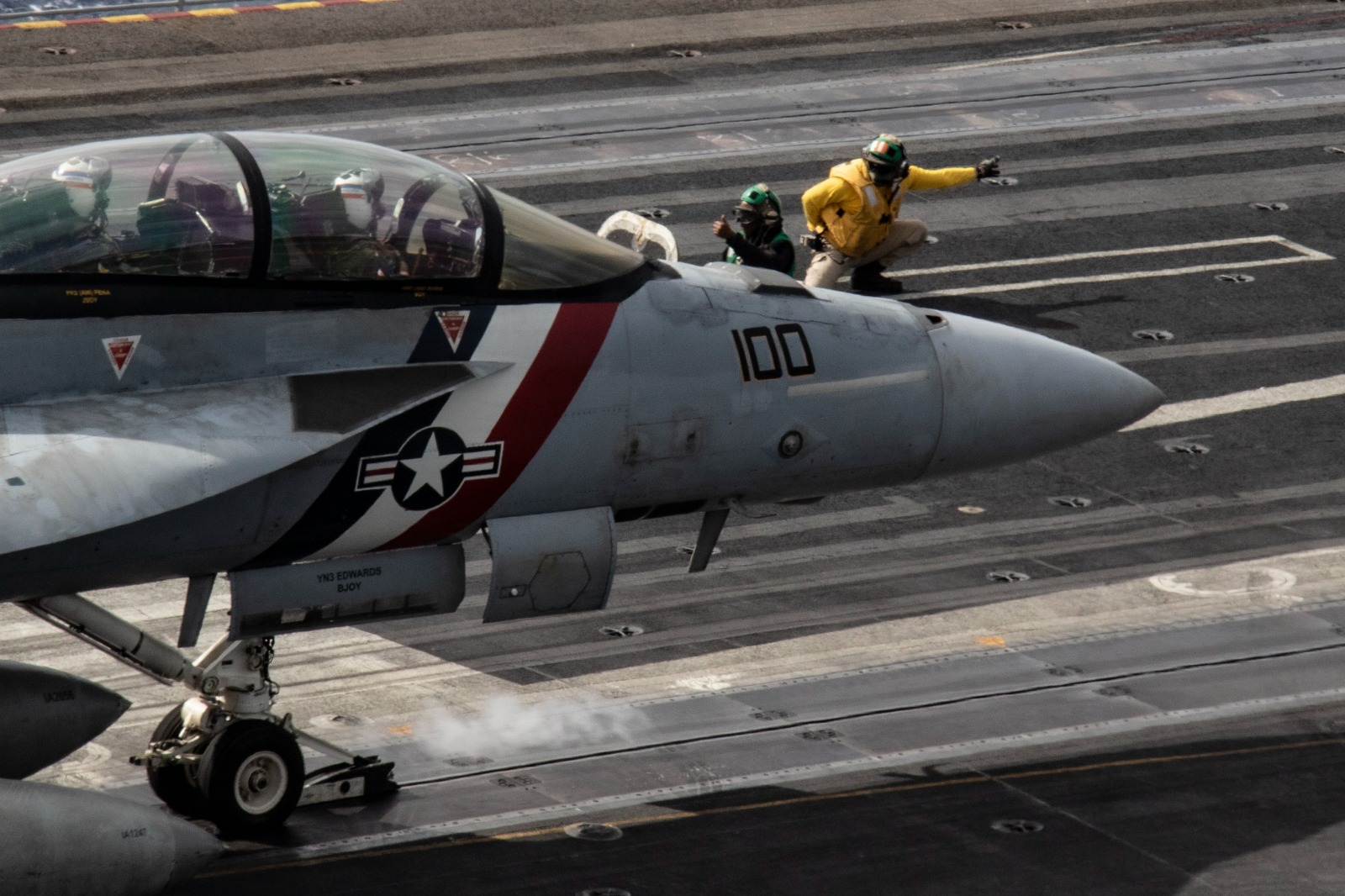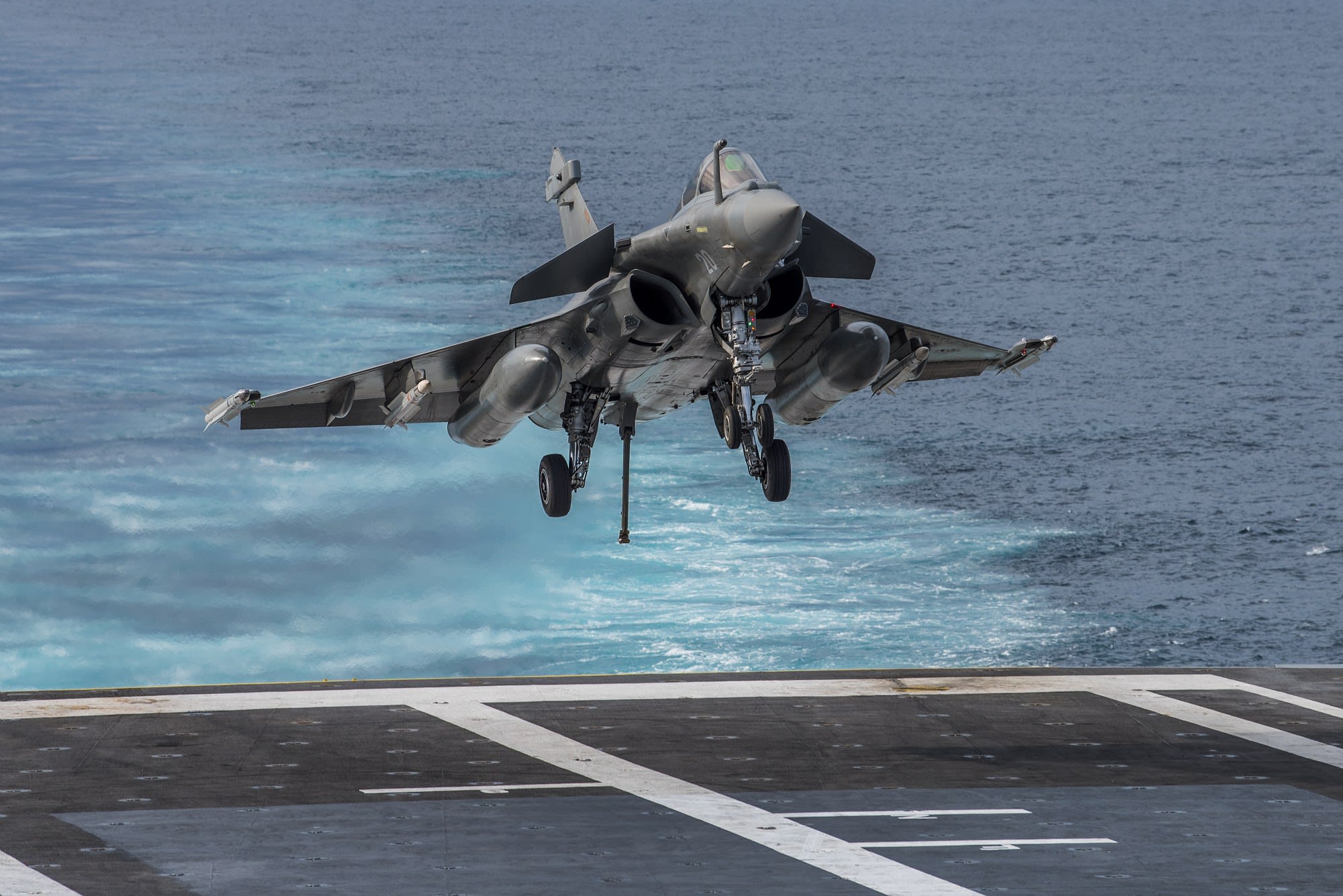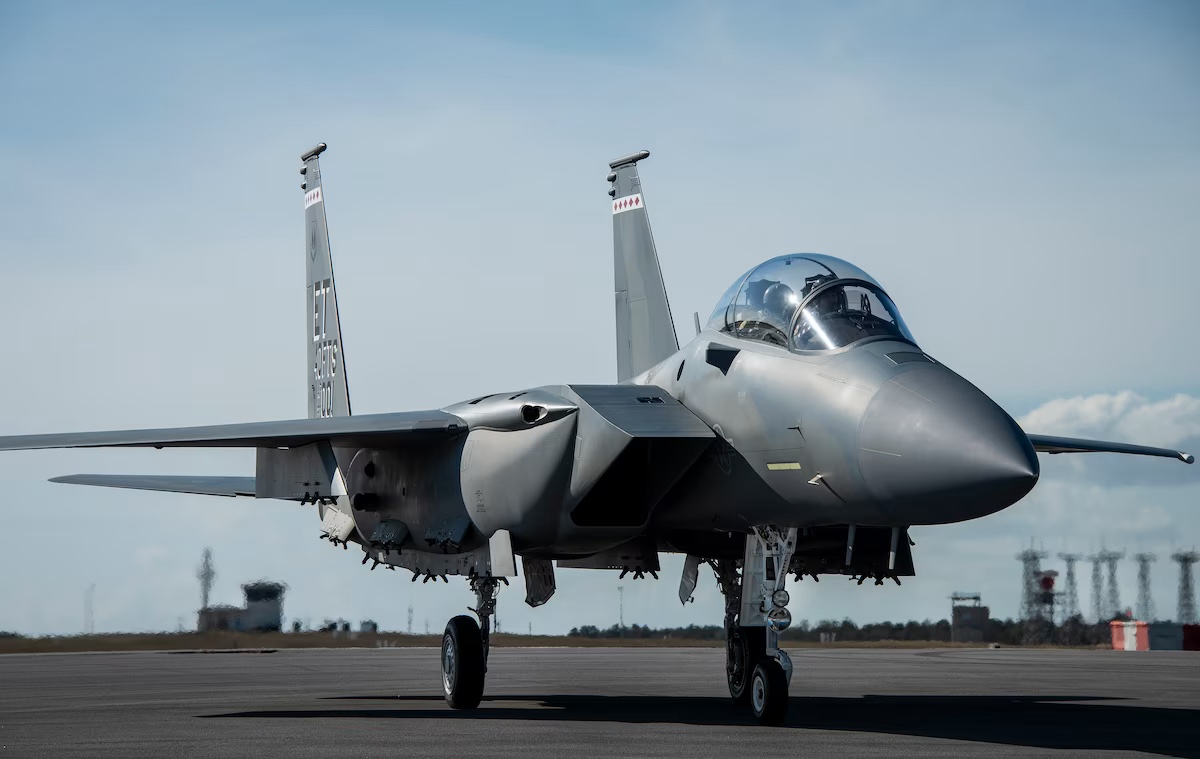Failing to attract new customers for its F/A-18 Super Hornet fighter jet, the US-based aerospace giant Boeing announced last year that it would shutter the production line for the aircraft by late 2025. That timeline, however, could be pushed further, according to latest reports.
On March 19, 2024, the US Navy granted Boeing a USD 1.3 billion contract for the acquisition of 17 F/A-18E/F Block III Super Hornet fighters and the delivery of a technical data package essential to the aircraft’s maintenance.
While the Boeing F/A-18 Super Hornet may have had a few more years of production largely due to this recent Navy contract, the aerospace giant intends to discontinue manufacturing the aging fighter after 2027 after failing to find new customers. The delivery of its last order is expected to be completed by the spring of 2027.
“We ran several international campaigns or competitions that we were unsuccessful in previous years,” Mark Sears, Boeing vice president for fighters, said in an interview with Breaking Defense. “That kind of played out, and there are no active discussions with the Navy about additional F-18s beyond these.”
As per Sears, Boeing intends to reduce its monthly production rate of two jets to one and a half while progressively redirecting its St. Louis Super Hornet workforce towards other programs such as the F-15EX fighter, T-7A trainer, and MQ-25 refueling drone.
“We are growing at the site. And there is a need for the talent that exists on F-18 as we slow down and ultimately complete [the order],” Sears said while also mentioning that Boeing does not anticipate “any reductions” in the staff at the facility as development on the Super Hornet winds down.

The US Navy has been transitioning from its old Super Hornets, which entered service in 1999, to the fifth-generation F-35C Lightning II carrier-capable fighters. The service has been contemplating slowly stopping purchasing the aging Super Hornets. The latest order, therefore, is the last for the aircraft that has been a symbol of American force projection globally.
While more than 700 F/A-18 Hornets and Super Hornets are in operation today, only two foreign militaries have bought the warplanes: Australia and Kuwait.
Although Boeing made a concerted effort to pitch the latest variant of the Super Hornet to several countries, it failed to bag any contracts. In recent years, the Super Hornet has been pitched to countries including Canada, Finland, Germany, India, Poland, and Switzerland. Boeing lost major export deals to its opponents, such as Lockheed Martin’s F-35s, Dassault Rafales, and even Saab Gripens.
Canada rejected the Super Hornet in 2021, even though it wanted to replace the 76 aging CF-18 Hornet fighters in its fleet. Later, it surprised everyone by choosing the F-35 Lightning II from Lockheed Martin.
Similarly, Finland, Switzerland, Poland, and Germany also chose the F-35, which has essentially swept NATO countries in the last couple of years. Lockheed Martin’s win of the F-35 has come as a massive loss for the Boeing Super Hornet.
Last year, while announcing the possible shuttering of the Super Hornet production lines, Boeing said the deadline would be extended by two years to 2027 in case the Indian Navy selected the F/A-18 Super Hornet Block III aircraft that was competing against the Dassault Rafale-Marine.
Boeing diligently pushed the sale of the Super Hornet to India in 2022 and announced a road map to significantly increase its investments in line with the “Make in India” initiative. It also pledged to transfer cutting-edge technologies to the Indian industry if India chose the Super Hornet fighter.

The aircraft underwent extensive trials at a shore-based facility in India, reinforcing its ability to operate off Indian carriers. However, in July 2023, the Indian Government announced the selection of the Navy Rafale and placed an order for Rafale-Marine fighters. This closed the lid on Boeing’s export of the latest Super Hornets.
With the Super Hornet now out of question, Boeing seems to be focusing on the production of the F-15EX which is another aircraft that is being pushed for export.
Boeing’s F-15EX For Export
Boeing describes the F-15EX as “the most advanced version of the F-15 ever built, with digital fly-by-wire flight controls, a new electronic warfare system, an all-glass digital cockpit, and the latest mission systems and software capabilities.”
The F-15EX is an upgraded variant of the combat-hardened F-15 Eagle that several countries around the world have operated. It is now being pitched for export on the premise that the F-15EX could use any long-range weapon available, including JASSM-ERs (Joint Air-to-Surface Standoff Missile -Extended Range) and long-range missiles. It can go great distances with its conformal fuel tanks, which enable air superiority over distances.
While analysts have frequently voiced the need for a stealth fighter in the service over an upgraded F-15, the proponents of the F-15EX argue that it is a different aircraft meant to perform duties that are diverse from those that may be entrusted to the F-35.
The F-15EX has successfully tested missiles, bringing it closer to having more air-to-air missiles in its inventory than any other fighter, including the F-16 Fighting Falcon, the F-35, and the F-22 Raptor.
Last August, Indonesia emerged as the first export customer of the F-15EX Eagle II multirole fighter after formally committing to buying up to 24 of the jets from Boeing. The US reportedly agreed to transfer a country-specific F-15EX variant known as the F-15ID to the Southeast Asian state.

After securing the first export order for the aircraft, Boeing presented Poland with a pitch for the F-15EX at MSPO 2023 in September 2023. However, no details were released by either side.
Boeing said during the 2024 World Defense Show in Riyadh that it would sell 54 F-15EX aircraft to Saudi Arabia in addition to the 84 F-15SAs acquired in 2011. However, no development has been made on that end yet.
The US acquisition of the F-15EX has been rather controversial. Initially, officials had intended to purchase 144 F-15EX fighters; which was reduced to 80 in the budget request for FY23. Later, the service brought 24 planes back in for FY25 in FY24, with a fleet of 104 aircraft as the ultimate target. However, the budget documents published recently show that it would be buying six fewer aircraft of the 24 planned.
As the Super Hornets fade away, the F-15EX remains the most ‘sought-after’ and most powerful warplane for Boeing and the US military.
- Contact the author at sakshi.tiwari9555 (at) gmail.com
- Follow EurAsian Times on Google News




